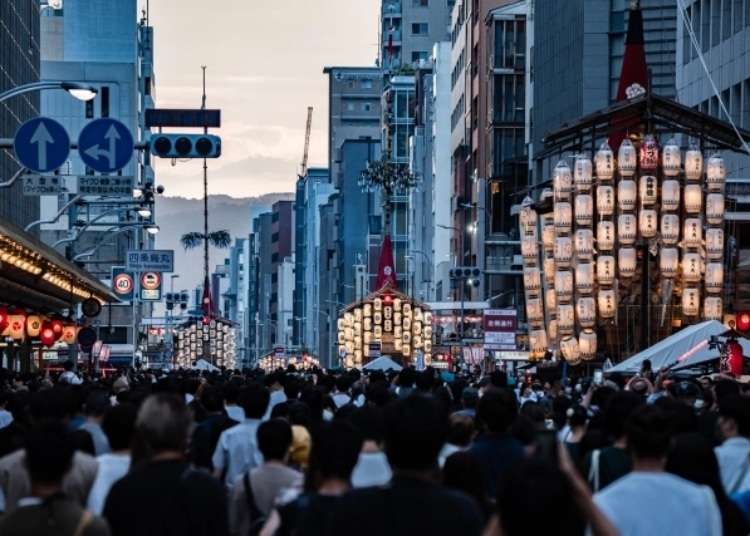
There’s more to these giant Yamahoko floats than first meets the eye.
Our reporter Tasuku Egawa was visiting Kyoto the other day for only the second time in his life when he came across a police barricade blocking his walking route in Gion Shijo.

Being an out-of-towner who wasn’t sure whether this was a regular thing or something out of the ordinary, Tasuku asked one of the police officers what was going on and he replied:
“It’s Gion Matsuri”.
Egawa had heard of this famous annual summer festival, but he was in Kyoto for work and had no idea that it was going on while he was there. Having never attended the festival, Tasuku couldn’t believe his luck at the fortuitous timing of his visit, so he immediately followed the crowds to wherever it was that they were going.

Tasuku ended up walking for about a kilometre (0.6 miles), but as soon as he caught sight of where everyone was headed, he was glad he’d followed the crowds, because there were brightly lit, huge floats there to greet him.

As he got closer to one of the floats, Tasuku was surprised to see a large group of people gathered at the top playing instruments.
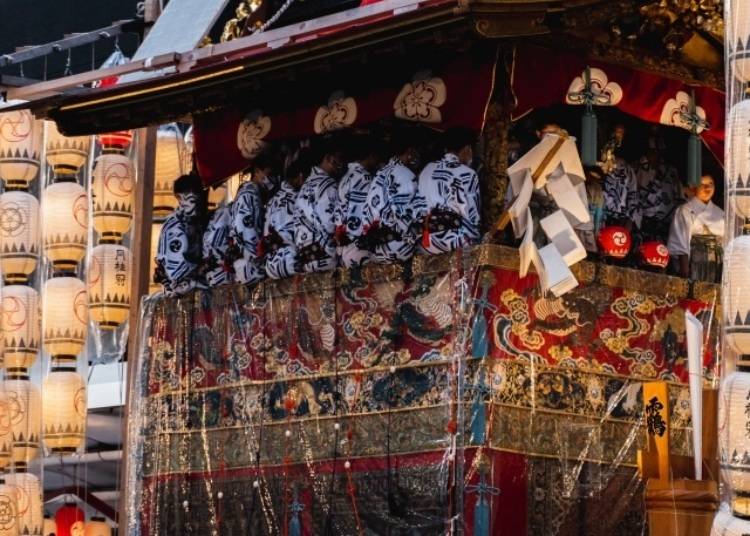
Overhearing a TV reporter who was broadcasting nearby, Tasuku learned that these giant floats were called “Yama” (slightly smaller floats are called “hoko”), and this was the “Yamahoko Parade”, a highlight of the festival that was causing a stir as it had been three years since it was last held, due to cancellations during the pandemic.
Standing at around 25 metres (82 feet) in height, these floats were towering displays of beauty, and Tasuku found it hard to tear his eyes away from them. When he eventually did, though, he found there was a stall nearby that looked to be extremely popular with customers.
▼ It was so popular that a sign out the front read “Chimaki Sales Have Finished.“

▼ They’d sold out of a few other things as well, like drawstring pouches and bookmarks.
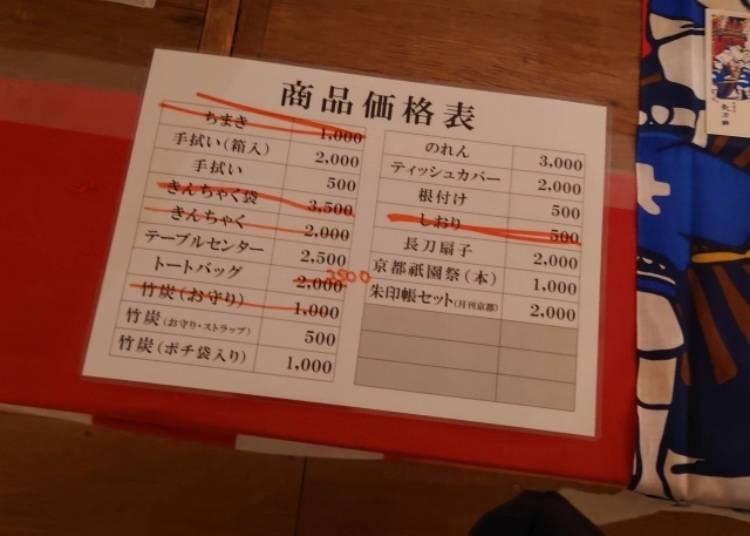
Tasuku is a big fan of chimaki, a sweet that consists of mochi wrapped in bamboo grass, and because he’d seen lots of people around carrying them, he realised chimaki was the must-buy item at the festival.
▼ So he set about looking for a place where he could buy one, eventually settling on Yasaka Shrine, which had lots of chimaki in stock.

The festival is run by Yasaka Shrine, so Tasuku figured this would be a good place to buy some official chimaki.

▼ Tasuku handed over 1,000 yen (US$7.35) and was given this paper bag in return, which contained…
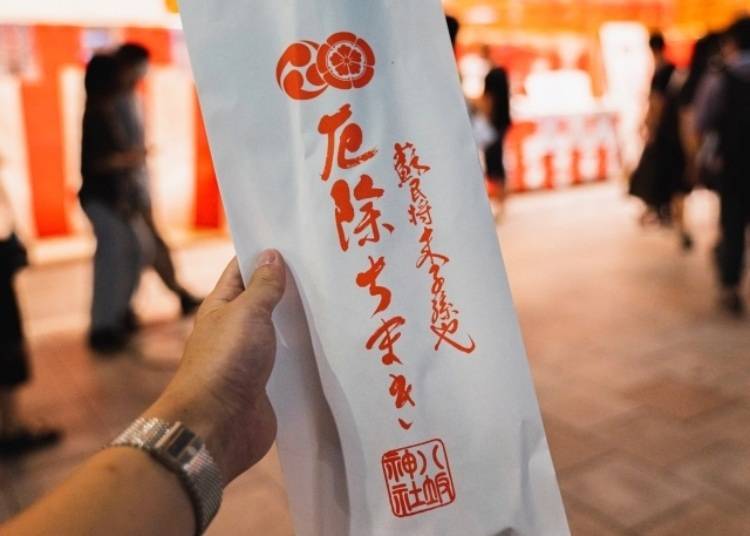
▼ …chimaki!

When Tasuku looked inside the bag he had to do a double-take, as this chimaki didn’t look like the ones he’s used to buying. Usually, chimaki are wrapped in fresh green grass but the bamboo on this chimaki looked totally dry.

▼ Totally…

▼ …dry.

The chimaki came with some printed information, so Tasuku took a moment to read about what he’d just bought. Apparently, “chimaki” originally contained nothing inside them, and the ones sold at the Gion Festival continue this tradition, as they’re designed to be used as talismans to ward off evil.

People who attend the Gion Festival buy these chimaki to hang above their front door for protection, and they’re also used by local hotels and businesses. Those looking for specific types of protection or assistance from the gods should take note of the floats, because although they look alike from a distance, they have different names and each one has its own stall that sells a particular type of talismans.

Most of the talismans are designed to ward off disease and disaster, including those offered by Tsukihoko (pictured on the left in the image below), Kankohako (middle) and Naginata (right).

Other floats offer talismans for things like business prosperity, fire protection, easy births, marriage and wisdom. Tasuku had no idea there was so much to know about the Gion Festival, and he was intrigued to discover the meaning attached to all the beautiful floats.
He was glad to have picked up a chimaki to protect him from evil, but there was one problem….he now had a craving for sweet chimaki.
▼ The talisman appeared to have given Tasuku some luck, because he was able to find the chimaki he wanted at the station.

▼ The chimaki he’d been craving!
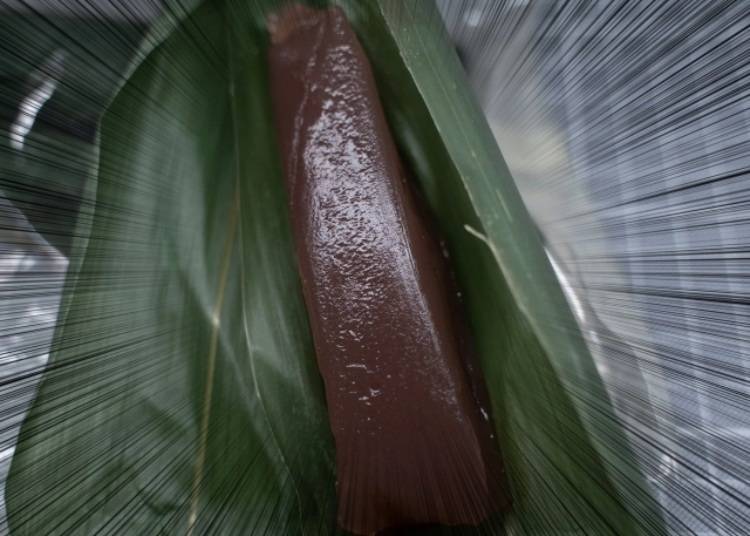
Priced at 700 yen, this red bean paste chimaki was slightly cheaper than the non-edible type he’d bought at the shrine, but it wasn’t going to last him nearly as long. No sooner had he opened it than he’d devoured it, and after learning all about chimaki at the Gion Festival, it tasted far more delicious than any chimaki he’d ever eaten before.
Tasuku’s night at the Gion Festival viewing some of the 34 wooden floats at the Yamahoko parade was a night to remember, especially as he’d stumbled upon the highlight of the festival without any prior knowledge or preparation. Sometimes the best-made plans are the ones that aren’t made at all, and it certainly made for a night to remember!
Photos © SoraNews24
Related
- Area
- Category
*Prices and options mentioned are subject to change.
*Unless stated otherwise, all prices include tax.
Popular Tours & Activitiess
Recommended places for you
-

Jukuseiniku-to Namamottsuarera Nikubaru Italian Nikutaria Sannomiya
Izakaya
Kobe, Sannomiya, Kitano
-

ISHIDAYA Hanare
Yakiniku
Kobe, Sannomiya, Kitano
-
Goods

Yoshida Gennojo-Roho Kyoto Buddhist Altars
Gift Shops
Nijo Castle, Kyoto Imperial Palace
-

Kambei Sannomiyahonten
Yakiniku
Kobe, Sannomiya, Kitano
-

Kanzenkoshitsuyakinikutabehodai Gyugyu Paradise Sannomiya
Yakiniku
Kobe, Sannomiya, Kitano
-
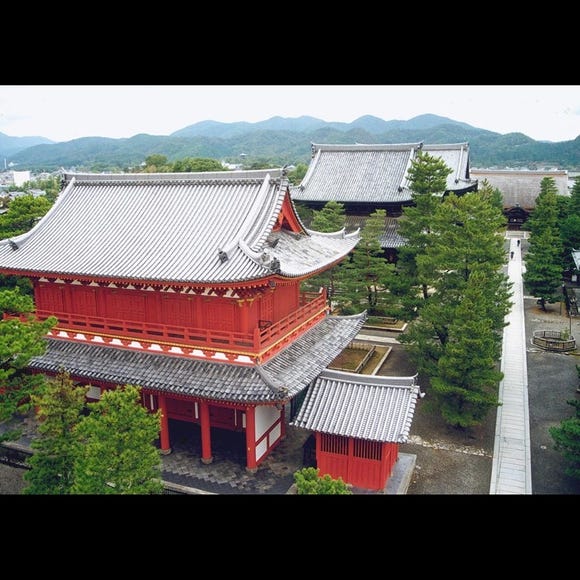
Myoshin-ji Temple
Temples
Arashiyama, Uzumasa
-

Best Things to Do and See Around Kyoto & Osaka in September: Events and Festivals in Kansai
-
Ad

Café Bahnhof in Osaka: The home-roasted coffee that captivated G20 leaders!
-

Celebrate a Dreamy Barbapapa Christmas at JR Osaka Station's Twilight
by: Guest Contributor
-
Ad

Recharge and Relax with a Healing Getaway at Kamenoi Hotel Toba
-
Ad

Discover Timeless Beauty: Kimono-en, a Web Magazine Exploring the Spirit of Kimono
-

Everything You Need to Know About teamLab Biovortex Kyoto (2025 Insider Guide)
by: Wemmy Chau
Inspiration for Accommodations
-

Spacious Family Hotel in Namba: 20 Comfortable Stays for Family Fun
-

Charming Hotels to Enjoy the Spectacular Views of Arashiyama's Autumn Leaves from Your Room
-

Experience Stunning Views of Osaka Castle from Private Spaces: Top Hotels Near Osaka Castle
-

Recommended by Visitors! Arashiyama's Best-Rated Hotels
-

Family-Friendly Universal Studios Japan Hotel with Excellent Access
-

Enjoy a Comfortable Stay in Osaka! 10 Hotels with Convenient Airport Shuttle Services
-

Top 10 Recommended Hotels Near Namba Station with Great Access
-

Enjoy Night Views from Your Room! Recommended Hotels in Namba Area
-

Osaka Travel Service Center: So Many Incredibly Convenient Services - in English!
by: WESTPLAN
-

Kiyomizu-dera Temple: Guide to Visiting Kyoto's Most Famous Sightseeing Spot
-

What Are Yatai? Japan's Festival Food Stalls Serving Up Classic & Trendy Street Food
-

10 Important Japanese Phrases to Know Before You Enter a Japanese Convenience Store!
by: Teni Wada
-

5 Amazing Kyoto Festivals You’ll Want to Experience During Your Next Trip
-

Festivals in Japan: Month-by-Month Guide to Enjoy Fireworks, Dances, and Seasonal Events
- #best gourmet Osaka
- #things to do Osaka
- #what to do in kyoto
- #what to bring to japan
- #best gourmet Kyoto
- #new years in Osaka
- #what to buy in nanba
- #Visiting Osaka
- #onsen tattoo friendly arima
- #daiso
- #Visiting Kyoto
- #best japanese soft drinks
- #japanese fashion culture
- #japanese convenience store snacks
- #japanese nail trends













